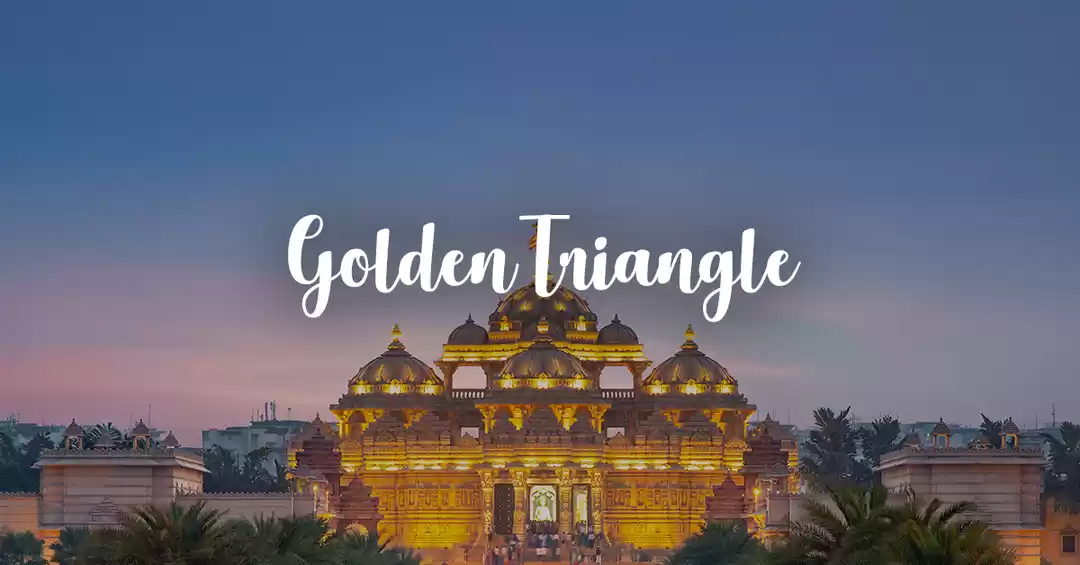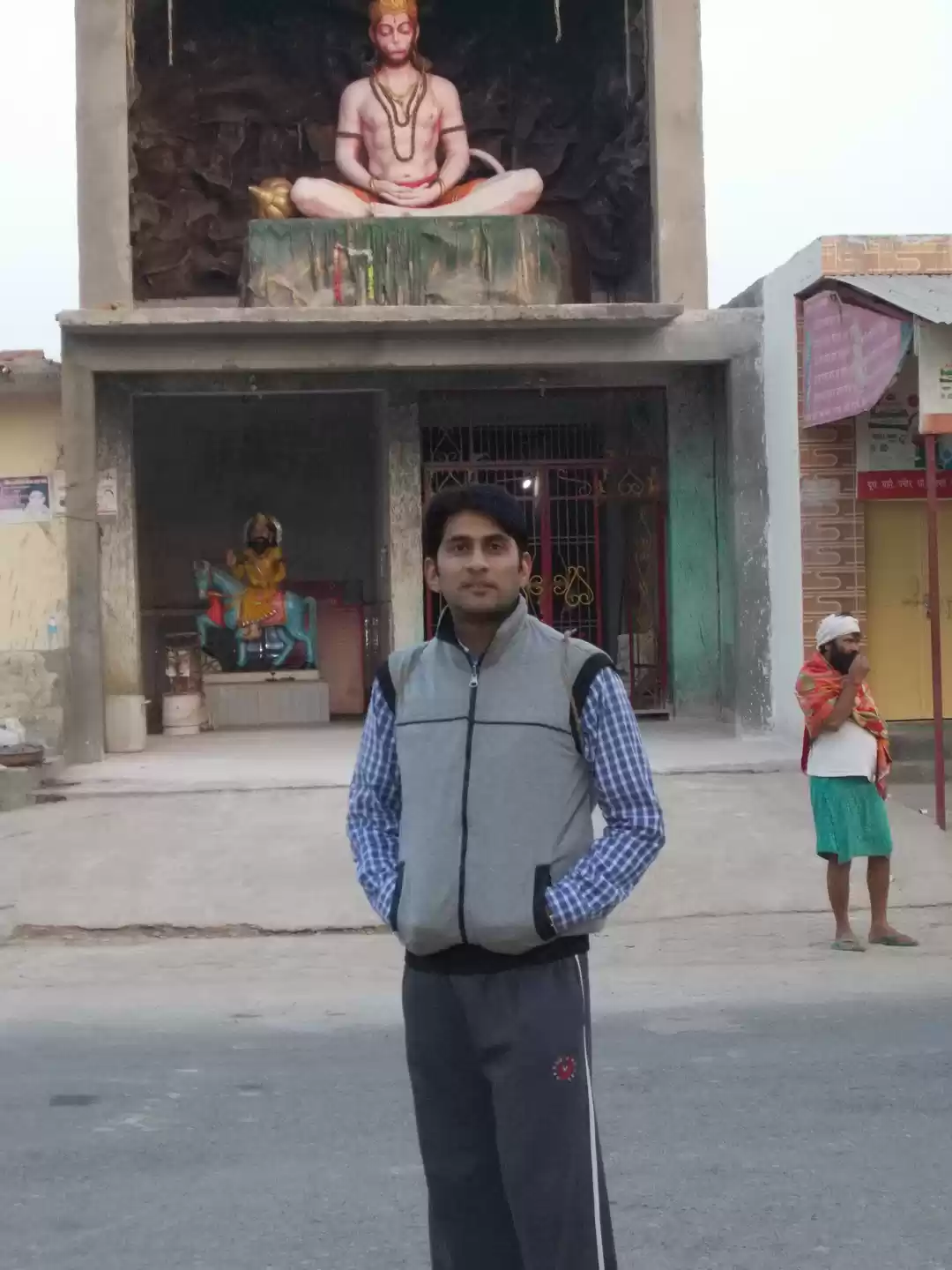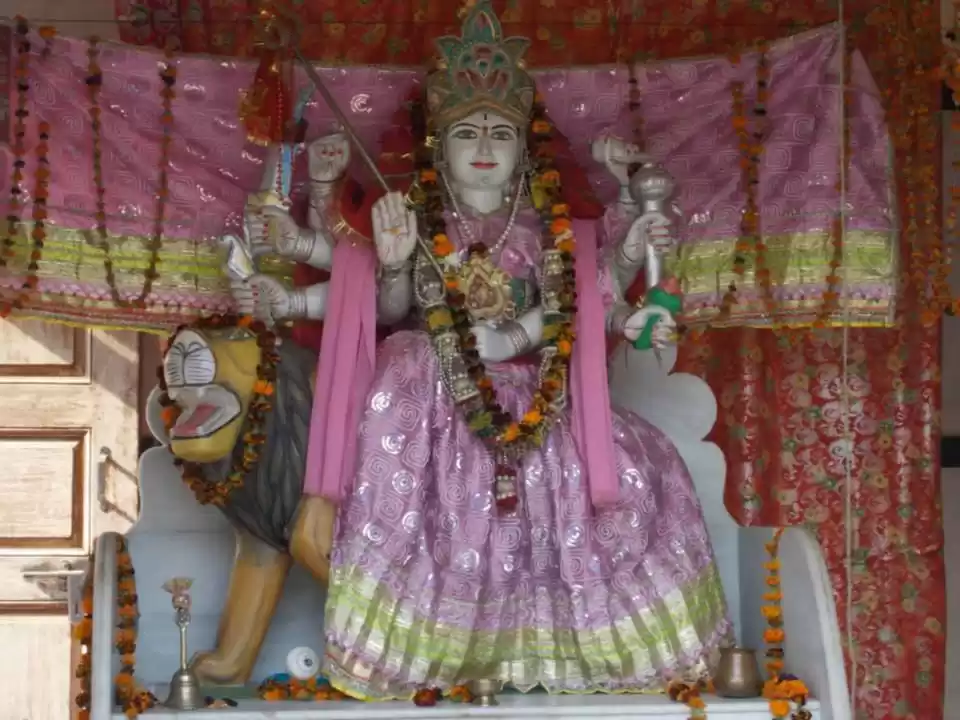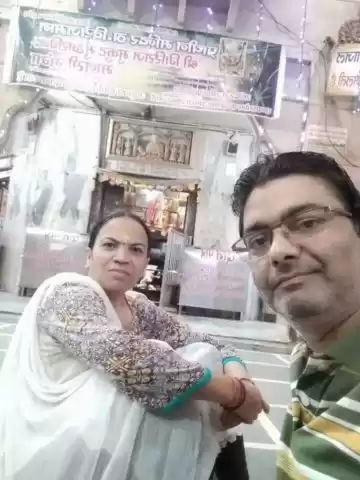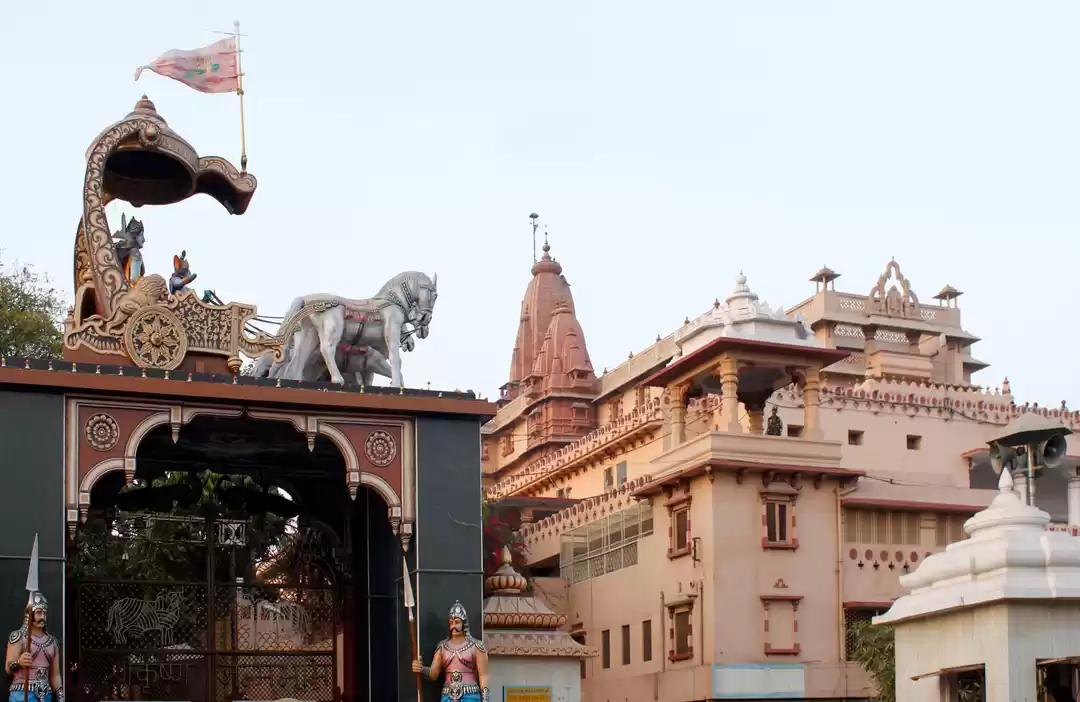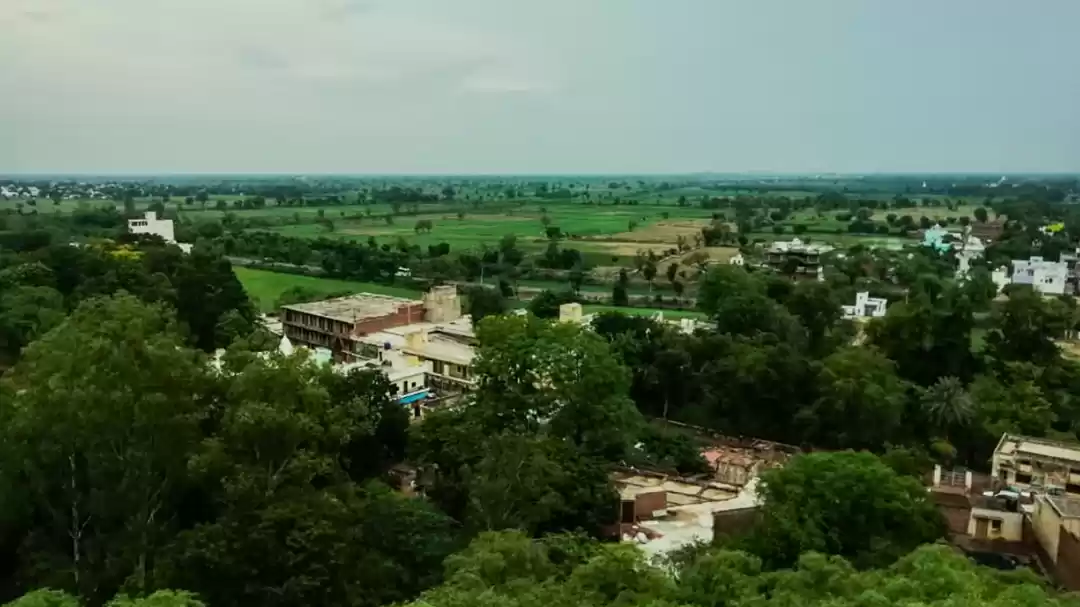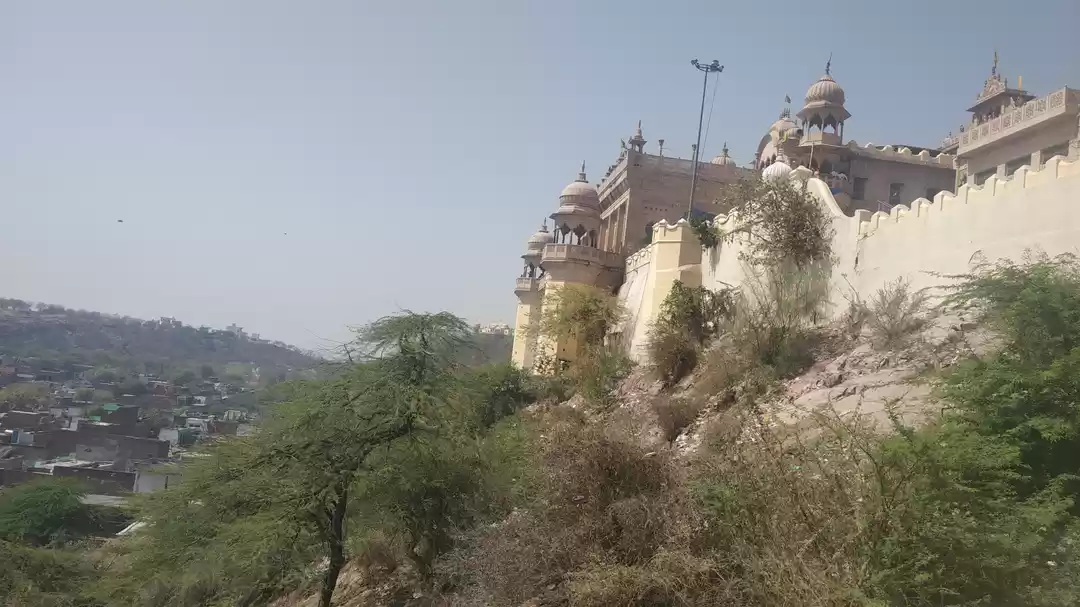By Nishiraj A. Baruah
If the spa at Shri Radha Brij Vasundhara pampers the body, the town where the luxury resort is located is supposed to provide curry for the soul. Govardhan, 22 km from Mathura, on the road link between Mathura and Deeg, is a town steeped in Krishna consciousness after all.

Remember the story when Lord Krishna held up a hill on his little finger? Yes, this is the town where the hill is, and it's called Govardhan. I recall this much from Amar Chitra Katha comics read as a child and later as the father of a child watching the animated serial Little Kisna on TV. There is more to the story, of course, and I copy-paste it below from Wikipedia for your info.

"According to ancient Vaishnava legends the Vedic Deva (demigod akin to guardian angel), Indra (god of rain and lightning) was feared by human beings because he would either give the people no rain or flood them if he was not satisfied with their worship. When Krishna found out, he opposed the performance of sacrificial worship for Indra. He emphasised the importance of karma and doing ones duty. This made Indra angry at the boy Krishna, one of the incarnations of the Supreme God. Indra thus invoked the clouds to appear in the sky and schemed to flood the region with rains lasting for seven days and seven nights. Krishna in reply then lifted the Govardhan hill, under which all the animals and people of the region took shelter, safe from the rains of Indra's fury. Ultimately, Indra accepted defeat. He offered his prayers and left to his heavenly kingdom. It also represents the downfall of Indra, and a new beginning in Hindu philosophy, from a more sacrificial/appeasement oriented worship, to a more spiritual plane of thought. "
Fed on the tale, partly mythological, partly religious, believers from far and wide come here. For what? To do a 21 km parikrama (circumambulation ) around the 80 feet, 8 km long hill to sweat out their sins off and acquire good karma.

But where is the hill? Isn't it supposed to be right in front of our resort we are now driving towards? Situated on the parikrama route, the resort brochure claims it is on the foothill of the hill. But we see nothing.
Until someone points to the sorry figure of a hill. Once massive, it is reduced to a sad mockery of a mountain which has been shrinking in size, not because of landslides or digging, but because of, as per folklore, a curse. The brown, barren hillock is surrounded by an equally lifeless woody forest.

What's a holiday without some beer! Though we spot several liquor shops, the resort serves no alcohol. Aware of that, we take a crate of Bira White cans from Delhi. We aren't on a pilgrimage really, but soon get so sucked into the pious energy of the town that after the first day, we aren't really upto pouring ourselves another alcoholic drink. Like with all holy places, Govardhan is also a no non veg town, but the vegetarian fare is so excellent that we suffer no meat cravings.
There is something about the town, where life revolves around the tale of a hill, that makes you spiritually inclined. "It has been one and a half year I have been here and now I wake up early at 4, go for a walk, do meditation, drink no alcohol and eat no non veg. You tend to be like that when you see everyone here living that life," the resort manager, a thorough whiskey-drinking, butter-chicken-eating Dilliwalla, says.
Everyone, yes every local, is deep into divinity, all serving the God of the place, Giriraj ji. That includes Khandelwal, the chaiwalla, who we hunt down following everyone's recommendation. I don't like his milky tea - it's difficult to please an Assamese born in a tea town, but he reflects the town's collective sentiment when he responds to my 'nice to meet the most famous chaiwalla in town' line. "There is only one famous being here and that's Giriraj ji," he says, "we are all his sewaks."
How true is that. The entire town, punctuated with a temple every hundred metres, is into the Radhe Krishna living. Most men have a choti (pig tail), most foreheads work like banners, Radhe radhe stamped on them. Many would be found counting prayer beads, saffron sadhus smoking the chillum, as people greet each other with Radhe radhe. Dressed in dhoti kurta, e-rickshaw pullers are well-versed with the entire legend of the place; even as beggars ask for alms in the name of Radhe.

"Nahin hein, nahin hein," I politely tell an old toothless saree-clad woman who thrusts her head inside our parked car. "I have no change," I add. Zinia, my companion, and me are enjoying a smoke. But no, she is no beggar, she asks for no alms. What she says next leaves me red faced. "Not good; not good for your lungs!" she tells Zinia. "You shouldn't smoke, beti."
The pilgrims, on their part, huff-puff their way in bare feet around the Govardhan hill. Chanting Hare Krishna, they come in singles, doubles, family with babies and in large groups of relatives. The most difficult to watch are those who attempt to do the seven-day parikrama, 3 kilometre a day, not on foot or on wheels, but on the length of their bodies (full prostration), propelled by faith, never mind the dust and grime of the road. But when you find even kids being made to do that by parents, I want to scream.

The well-healed pilgrims stay in resorts like Shri Radha Brij Vasundhara (the one we are in), not in Rs 350 a night ashrams, as they emerge out of their rooms in the morning in freshly ironed kurtas and crisp sarees for excursions to nearby places like Vrindavan, Brijwasn or Mathura.
"I have been coming here for the last 30 years," says a middle aged woman from Lucknow staying adjacent to our cottage. "It started after my father's death. I was very upset, but soon I could distinctly feel the change in me. I have become very positive," she says.
The white skinned foreigners, sizeable in numbers and very visible, meanwhile are seen in glittery sarees - bindis and maang tikkas in place - as they go about their daily job of serving the Krishna. We spot two pretty Krishna bhakts, looking like Gopis, carrying a sackfull of grass to feed the cows.
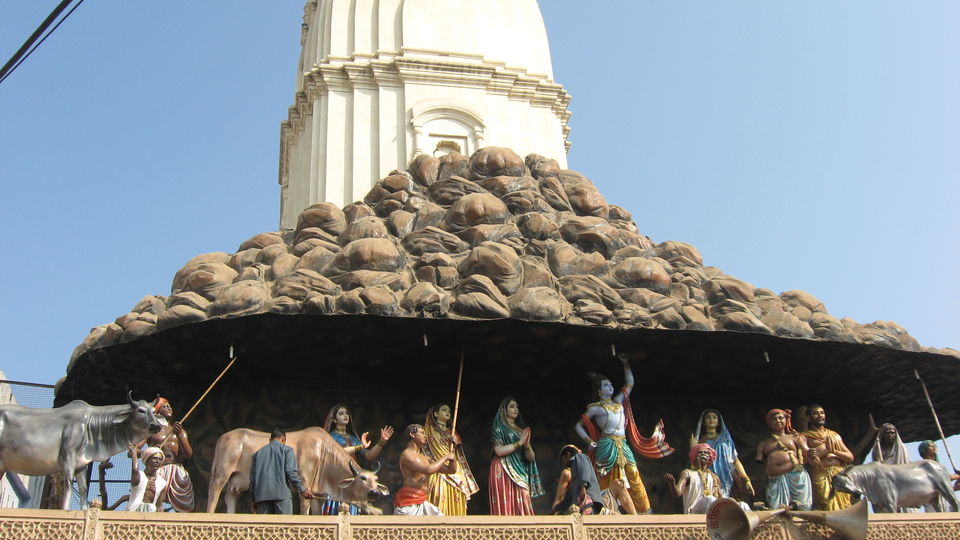
Cows have always been worshiped here, much before the pro bovine lobby became active, while pigs, meat for the lower class, are left scavenging in the ganda nala, their tummies blackened by dirty water. That's the dichotomy of this town: If the aroma of sandalwood floats in the air, so does the stench from the drains and garbage lying everywhere; if the bells and ghantas and drums vibrate in the ears, so does the cacophony of loud horns from bikes, trucks and cars. There are e-rickshaw drivers who are honest enough to give us a ride for Rs 30 (one actually spent extra time with us to narrate the Govardhan story), while there are others who would take you on a ride literally for Rs 200 for the same route.
Zinia gets put off by crowd at the town's most famous Giriraj (form of Krishna) temple. She gets more put off when she sees a large board inside the shrine that lists the prices for the various prayer services. Rs 71,000 - that's how much you have to shell out for one particular puja ritual called ankut' or annakuta. What kind of a puja is that, she can't resist asking the pujari. Before his reply, comes a receipt book. "How much should I write?" he asks. "Pay Rs 250 now, the rest you can pay tomorrow," he adds. Whatever bhakti she has disappears in the face of this crass greed.
"I don't think I can pray here," she says, as we go looking for a smaller temple free from tourists. Driving in the dusk slowly along the Parikrama route, we hear drums and bells. The sounds seem to have been coming from an inconspicuous ashram, one among many on the route, run on the generosity of the devout rich. We peep through the gate to find no one but the pujari and his assistant playing the brass ghanta. We walk in and sit down in front of the little temple where they are doing the evening aarti, the sloka chants coming straight from their hearts. No show-sha here, as the two simple souls continue their dedicated rituals. The experience stirs our soul, calming our agitated minds the chaos and clamour of the town left us with. The solemn experience leaves the otherwise loquacious Zinia quiet. "It isn't this quiet during Guru Poornima (also called Mudia Poono), where millions of devotees flood the place," says the pujari.

Next morning we plan to visit Vrindavan, half hour away, but end up doing a Goa, lazying, lounging, drinking, eating, sitting, talking... Spotting a few cozy bamboo and hay cottages that collectively make the Uppadhya's restaurant somewhere in the middle on Highway 19, we stop. Tempted further by white butter paranthas, we walk in for breakfast, cans of Bira White in our hands. And Vrindavan? Forget it. Too hot to go there now.
"Come on, going to a temple town without visiting temples!" Zinia exclaims, "not done, na!"
"Well, we don't want to be entering temples half drunk," I say.
"Why should that be a problem? The sadhus are always high on bhang," she reasons.
True that, but we leave out temple tour for the next day.
By evening, we set out to shop. These small town local markets can throw pleasant surprises. Rows and rows of shops on either side of the market road selling colourful trinkets lift up the spirits. There are the prayer beads and there are tiny digital metres that keep a tab on the number of counts. We bargain, we buy, as we walk the narrow road, honking motor bikes wheezing past. We pause to take a look at ancient houses ravaged and reduced in size by time. "Look at that!" I exclaim spotting what was probably a mansion once. The door is open and we step in to find a large courtyard. "Come out, come out," a male voices calls out from behind, "danger!" We stop dead on tracks and turn back. "Who stays here?" I ask the guy. "Me," says an ancient woman, wrinkles on her face marking herself as a living heritage. "You are very quiet today! What happened, pehelwan?" she addresses her body guard. The pehwalwan (muscleman) happens to be her dog, who seems pretty harmless actually.
We hang around till the shops start downing the shutters and by the end of it all we have four lungis in different colours (Rs 80 a piece), oil lanterns, tiny brass idols of bal Krishna, badminton rackets, agarbattis, a panting piece for Rs 350; a readymade dhoti for Rs 350, and even an aluminium tasla for Rs 200 in our bags. The last one is required for winters to lit up a bonfire.
Along the way we go hunting for Bhagwan Singh's famous mithai shop that offers mind-altering kachoris made in pure ghee for Rs 18 a piece. We buy a few for friends back home. We also talk to shopkeepers, all too happy about the arrival of Yogi sarkar in UP. "Development work is happening too fast. What couldn't be completed in five years are being completed in 15 days since he has become the Chief Minister," says one, referring to roads and bridges. We see the proof ourselves. The potholed road we drove on towards our resort is flawlessly smooth by the third day when we drive back home. "Govardhan will be like Delhi and Mumbai in the next three years. It will totally change. Take a picture now," says another shopkeeper. Development would mean displacement of residents living there for ages, but they are fine with it.
Back at the resort, a world away from all the noise, we soak in the serene atmosphere. With a circular grassy lawn around which the cottages are built, it is relaxing to sit outside our cottage. "What happened, you not drinking?" Zinia asks surprised. "Not feeling like," I say. Guess that's what Govardhan does. With stars overhead, and a nip in the air, alcohol seems almost seems abusive.

Mornings are as nice as we wake up for a morning walk. Ashrams after ashrams line the parikrama marg. Breakfast in the resort has dhoklas and theplas. And that's because Gujratis form a large chunk of guests here. "When they are a large group we make sure to sweeten up the dishes as per their preference," says Deepakji. By mid morning, we play air hockey, we play ping pong, and we play pool. This, even as a family decides go wet and wild, aiming the grass sprinkler at each other, not sparing even a 3 year old soaked till the skin.
There is another little one who seems to be enjoying the spectacle. It's a black pug who can't seem to make up its mind if it wants join in the water sport or not. Later it goes chasing monkeys. I call him and he runs to us, tugging at my jeans and Zinia's sandals. "No, Barush, no," its owner, a young woman, calls out. A ball of energy, I manage to grab this two month old, and lift him up for a chunnu-munnu-pookoo-kootoo cuddle. So what does Barush mean? "Hebrew for blessed," the owner says. That is a good thing of the resort - it's pet friendly.
The other good thing is there is no wi fi in the rooms. No, it has nothing to do with keeping guests away from the worldly distractions, and everything to do with commerce. "You don't want guests stay put in their rooms with their laptops and phones. I want them to come out and buy our food and services," the manager says.

Which we do, but when it comes to tipping the staff, I am a bit hesitant. None of them have asked for it, but their body language leaves me with little doubt. The bellboy, er man, who fetches our luggage to our rooms would not leave the room, waiting hopefully, his stupid ear to ear grin in place. The parking attendant goes out of his way to guide us to park when no help is required. The security guard salutes ever too often and one of the waiters would greet us with Radhe Radhe a little too enthusiastically to make me suspicious. Do I tip everyone? Especially when they are offering us no extra service or service that isn't required at all? It isn't difficult to see through their niceties.
And then this waiter comes and warms up my heart. Without even asking, he fetches us tea, sabzi and hot poories from the buffet table. And he does all of that with a smile that is genuine. I pay him Rs 100, aware that a good service can never be paid off with a price.
Driving back to Delhi on the Expressway, we keep an eye on trucker's dhaba - those basic good old cherpoy wala outlets that serve no non-nonsense food at no-nonsense prices. Not for us the LED lit, swanky ambience of food courts located along the way. Located beyond the side fence along the Expressway on farmland, it isn't an easy job to spot these inconspicuous dhabbas when the odometre needle is at 100 kmph plus. So how does one spot them? Just keep an eye for trucks. If a few of them are parked in a particular spot, there must be a dhaba! We get down from our car and bend our heads to enter a small opening on the security fench. Owned by a farmer, we sit cozy on a cherpoy and enjoy a hearty breakfast of paranthans and white butter.
We pay the bill only to realise that both of us are left with just 50 rupees now. How to pay the toll fee? It's Rs 275. I panic specially when we find no ATMs on the Expressway. Will cards be accepted? What if they don't!
"Their problem," Zinia says coolly.
I approach the toll both with mixed feeling. Without a word, I offer the man my ATM card. Without a word he takes out a card swipe machine.
Radhe. Radhey.





